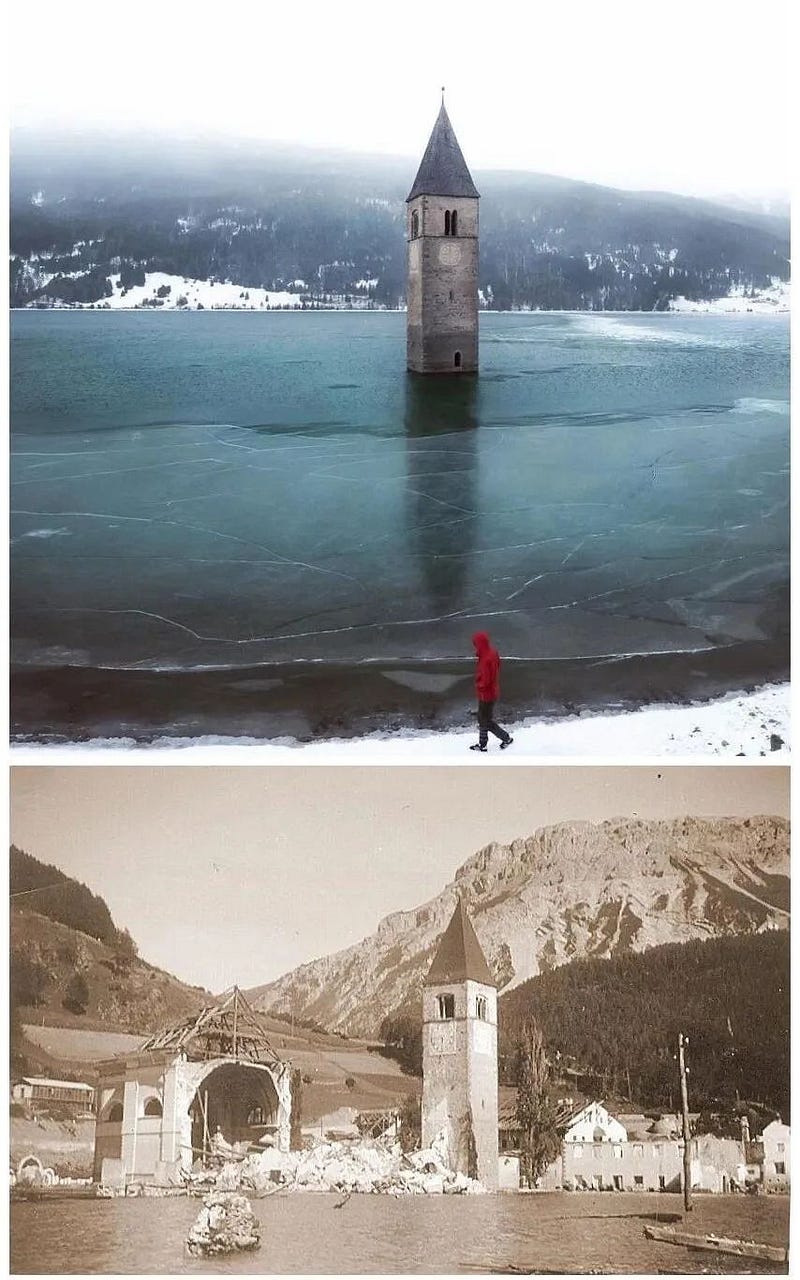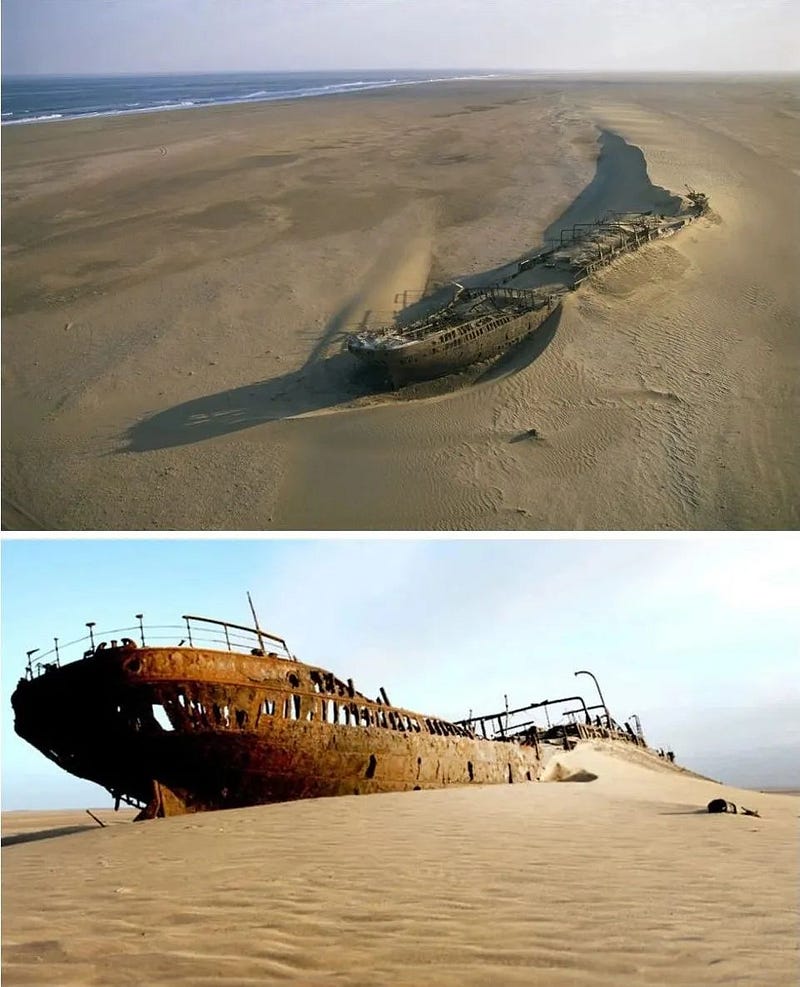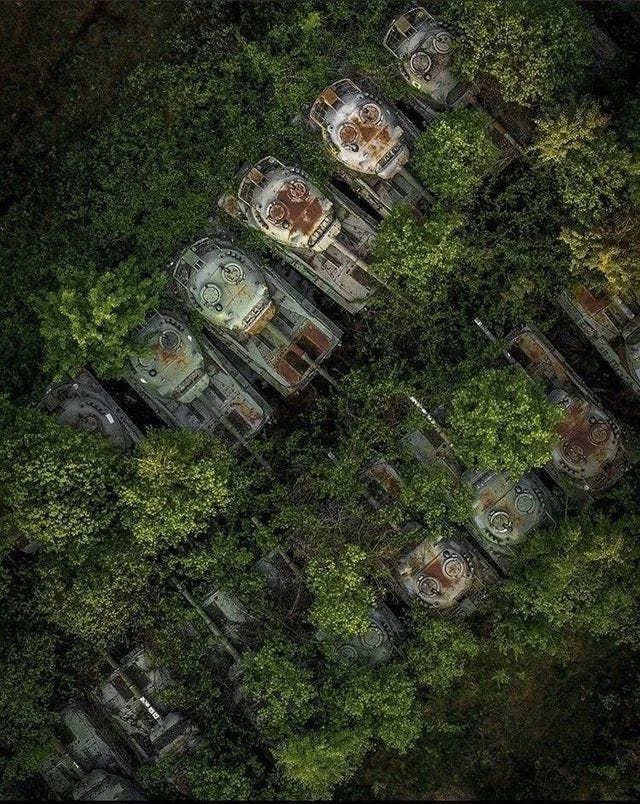Nature's Reclamation: 30 Forgotten Corners of Our World
Written on
Chapter 1: The Echoes of Abandonment
What might our planet look like if humans were to vanish entirely? How long would our cities, infrastructures, and remnants of civilization endure? In the hidden corners of the world, where human presence has faded, nature offers its own answers, silently reclaiming what was once lost.
Section 1.1: Chishima's Transformation
On Chishima, a deserted island in Japan, remnants of human structures have succumbed to nature's embrace. The building's roof, now filled with water, resembles a serene swimming pool suspended in the sky.

In the woods of Anglesey, UK, an abandoned 17th-century mansion has flourished under nature's care, transforming into a breathtaking sight.

Section 1.2: The Enchantment of Time
On a tiny island in Ireland, an ancient castle aged 800 years is now overrun by ivy, appearing as if it stepped out of a fairy tale. In 2018, it was listed for sale at £80,000, a relic of times gone by.

In Sweden, an abandoned swimming pool has become overgrown with various plants, serving as the backdrop for the post-apocalyptic series “Rain.” This showcases how art can reflect reality.

Chapter 2: Nature's Touch on History
The train "graveyard" in the Perm region of Russia once served as a nuclear war backup base. Now, it hosts hundreds of neglected trains, slowly deteriorating and entwined with weeds, creating a unique steampunk aesthetic.

Comparative images of the German town of Kuhlen reveal its submerged fate. In 1950, the town was flooded to create a power plant, leaving only an abandoned clock tower to stand in the lake for 71 years.

Now, we shift our focus to the intriguing tale of the "Shipwreck" Cemetery along Namibia's Skeleton Coast. Here, the wreck of the Edward Bolen has been gradually buried beneath a blanket of yellow sand since it ran aground in 1909.

The video "I Was Cornered And Beaten By 7 People" showcases an intense personal experience, revealing the realities of human confrontation and the resilience needed to overcome adversity.
Section 2.1: Nature's Healing Embrace
In Paraguay, an abandoned factory has become home to a growing tree, a poignant reminder of the lives once intertwined with this space.
As we delve deeper into the narrative of the Aral Sea, we find an area that has shrunk by 90% since 1960, leaving behind numerous forsaken fishing boats stranded on the dry seabed. Today, camels find shade under these remnants.

Houtouwan Village on Shengshan Island in Shanghai was once a bustling fishing hub. Following the 1990s migration to urban centers, nature has reclaimed the village, wrapping buildings in green foliage.

An abandoned cabin in Norway now resembles a whimsical treehouse, illustrating nature's magical transformation.

Section 2.2: Remnants of the Past
In England, the Black Death left entire villages deserted, yet some churches have stood resilient against time's passage. The once-vibrant community now exists only in memory.

In the Netherlands, a statue of Christ is gradually enveloped by trees in an abandoned cemetery, a haunting image of nature's reclamation.

As we reflect on history, we find remnants like Fort Carroll, a military fort from the American Civil War, now transformed into a lush island.

Chapter 3: The Cycle of Life
Amidst the wreckage of World War I trenches in France, nature begins to heal the land, gradually mending the scars left by conflict.

Ultimately, our existence is but a fleeting moment in the vast timeline of Earth. As time marches on, the marks we leave behind will fade, returning to dust, and nature will prevail, reclaiming its territory.